Soccer head injuries are common and research suggests concussion rates are increasing[1]. High-profile cases of concussion in soccer include former Tottenham Hotspur and Hull City midfielder Ryan Mason. Mason retired at just 26 years old following a severe head injury during a game.
Mason sustained his injury competing for a header from a corner kick in a game against Chelsea. Following a period of time away from the game, Mason sought expert medical guidance and was advised to retire. Mason had been tipped for a long and successful career, which was cut short simply by contesting a header.
Former Chelsea captain John Terry also suffered a head injury competing for the ball. In the 2007 English League Cup Final Terry attempted to clear a low ball with his head, just as an opposing player tried to kick the ball away. Terry was left concussed and unconscious on the pitch, requiring immediate intervention from the club’s medical team.
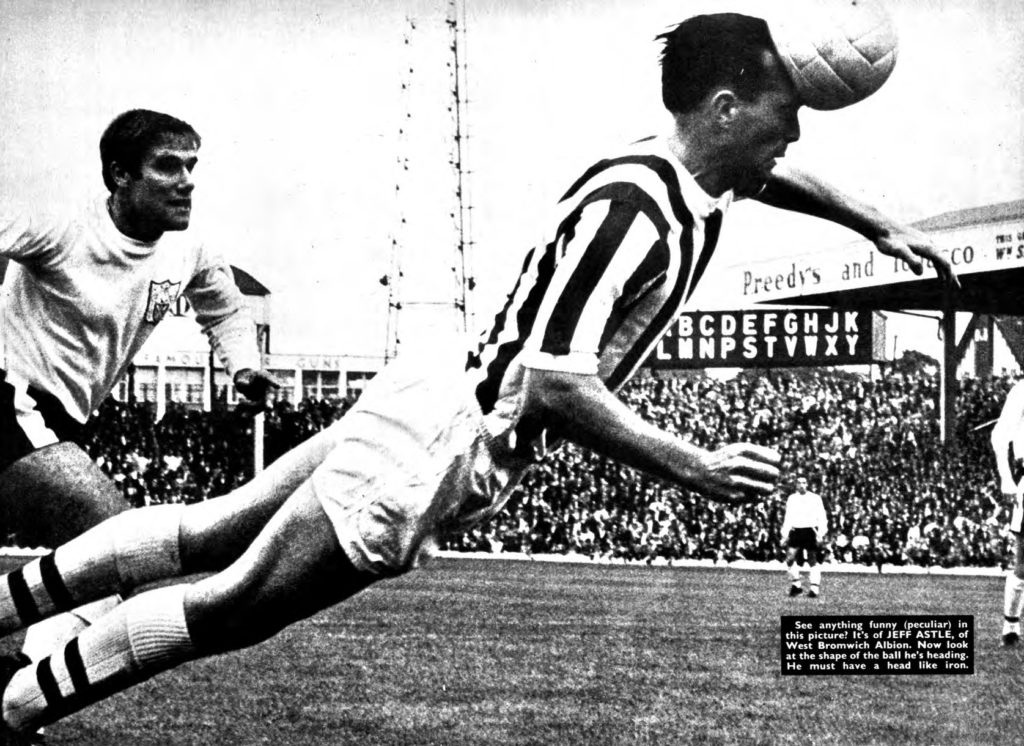
These issues are not unique to the English game. In the United States in 2008 Taylor Twellman – former New England Revolution striker – had his promising Major League Soccer career cut short following a concussion he sustained challenging the opposing goalkeeper in an aerial battle.
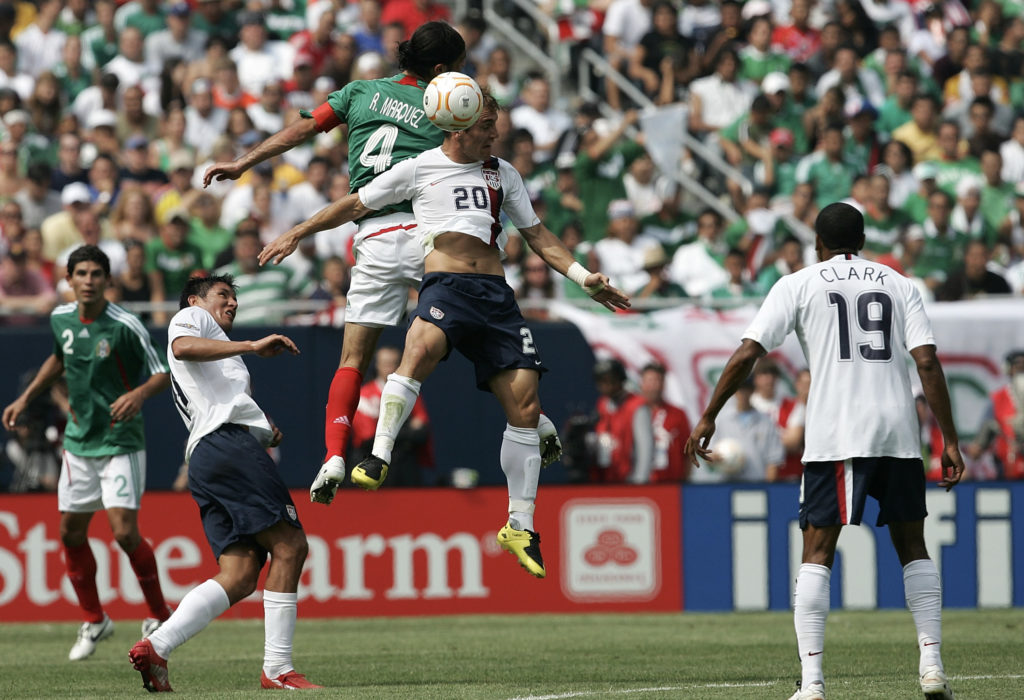
Twellman had been the fastest and youngest player to reach 100 MLS goals in the league’s history, but following a string of soccer-related concussions, was forced into a premature retirement.
Increasing Awareness of Soccer Head Injuries
These cases – along with similar episodes – have increased awareness of head injuries in soccer. In 2007, the English Football Association reviewed their ‘return to play’ protocols to include a requirement for a club medical officer to approve a player’s return to play following a concussion, rather than simply refraining from training and matches for a set recovery period[2]. Furthermore, Taylor Twellman founded Think Taylor, a foundation “dedicated to changing the culture in the world of concussions.”
However, the effects of subconcussive impacts – head impacts not resulting in concussive symptoms[3] – are less publicised. The most routine subconcussive impact in soccer is heading. This makes soccer a unique sport in that players voluntarily and frequently expose themselves to subconcussive head impacts during both matches and training.
Heading is integral to the game and appears to be innocuous, but what are the unintended consequences of this frequent exposure to routine impacts on the brain?
A new field of research has emerged to investigate this question. While this work is still in its infancy, it is beginning to build a picture of the potential effects of soccer heading on brain health. Further research is required to provide clearer conclusions, but let’s take a look at what we know so far.
Is there evidence of physical brain changes?
Brain scans are a very powerful research tool, but you cannot really see a concussion on a brain scan, let alone the subtle effects of subconcussion. Therefore, researchers have to use brain imaging techniques in inventive ways to assess how the physical structure of the brain might be affected by heading.
Some researchers have used brain imaging to assess the long-term effects of heading on brain tissue. Neuroscience methods – such as Magnetic Resonance Imaging (MRI) – allow us to visualise the brain in order to understand how the structure of the brain is affected by heading. Using MRI, Inga Koerte and Colleagues[4] investigated how the thickness of the brain is influenced by heading.
They scanned the brains of a number of former elite-level soccer players and estimated how many headers they had performed in their careers. Compared to a control group of former non-contact sport athletes, the former soccer players showed a greater decrease in cortical thickness. Furthermore, the estimated number of career headers correlated with cortical thickness in some of these brain regions.

Researchers have also discovered a relationship between the estimated number of headers in the previous year, and white matter structure[5]. The more headers a player performed, the more abnormal their white matter structure. For context, white matter is brain tissue that is important for neural signalling and communication [6]. This could lead to complications in later life, with some researchers finding evidence of a dementia-like brain disease in the post-mortem brains of former soccer players[7][8].
There are also inventive ways to assess the neurochemical balance of the brain and how this might be affected by heading. Our Stirling
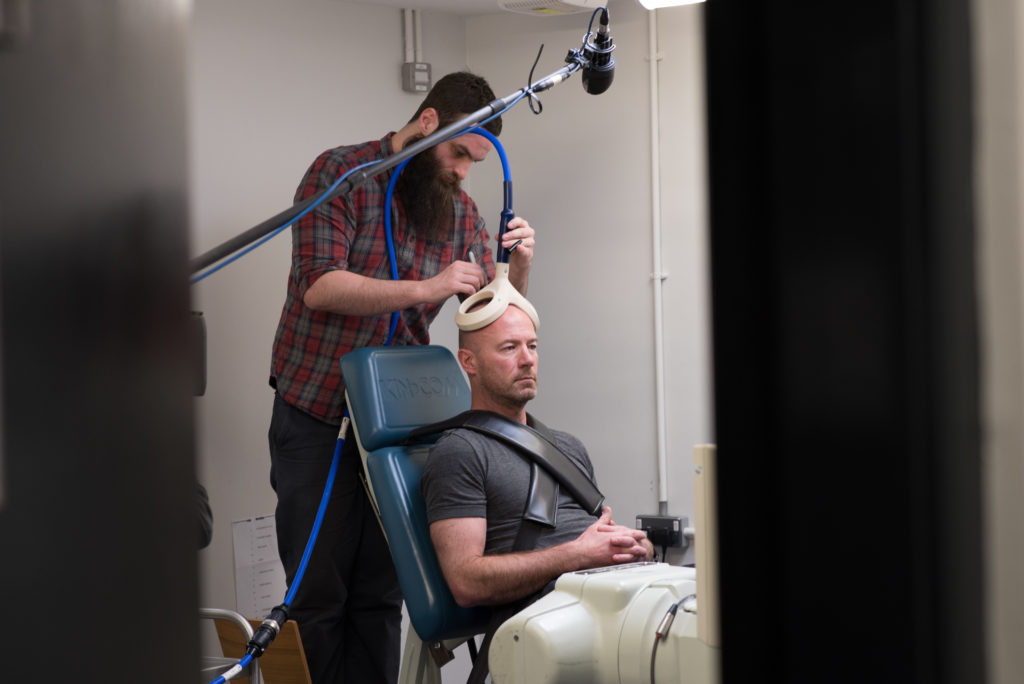
Using neuroscientific methods, research suggests exposure to heading might alter the physical structure of the brain.
Is there evidence for changes to mental function?
Cognitive research methods involve measuring an individual’s performance on a variety of tests. These examine different mental functions such as memory, attention, and learning.
Cognitive tests have been routinely carried out in soccer heading studies with varying degrees of success. A persistent problem is that many heading studies use tests designed to detect severe deficits in mental function, for example following significant brain damage.
However, heading likely produces more subtle effects on cognition which may not be detected by a test designed for more severe deficits. In these cases, failure to find effects of heading on cognition does not necessarily mean cognition is unaffected by heading. It may merely mean that standard clinical tests could not pick up potential effects.
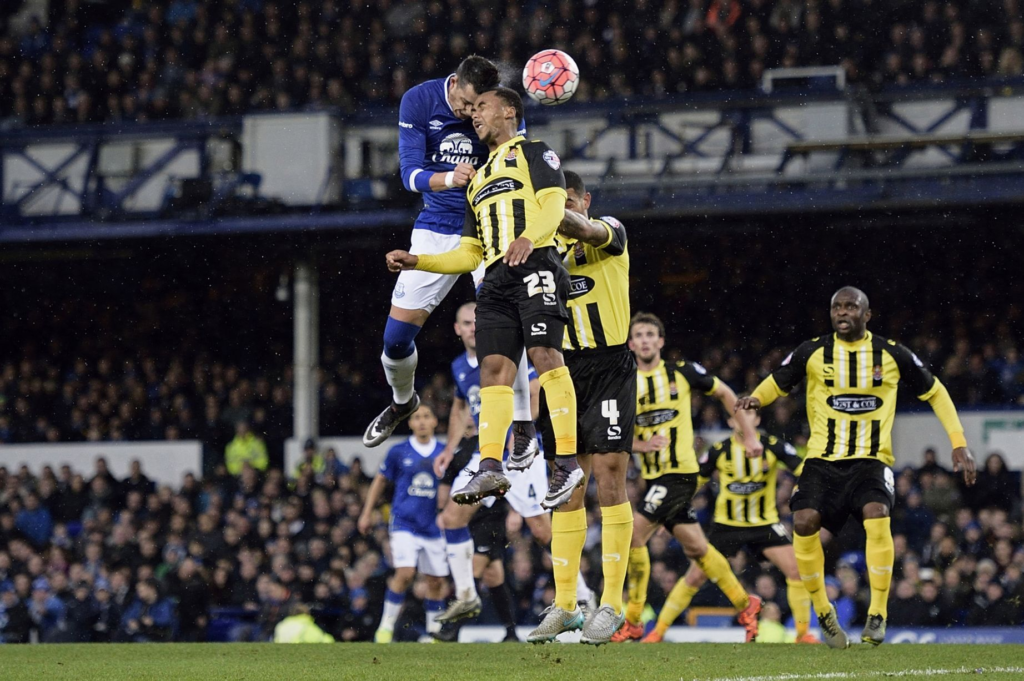
Studies employing more sensitive cognitive tests suggest heading does, in fact, affect mental function. These include studies which suggest heading is associated with decreased learning, attention, and memory performance [10][11]. When sufficiently sensitive cognitive tests are used to assess the effects of heading on cognition, it appears that heading affects mental function.
Is there evidence for chances to physical function such as balance?
Researchers are interested in balance as it is a persistent symptom in concussion, so it might be the case that subconcussion – in the form of heading – may also lead to balance problems.
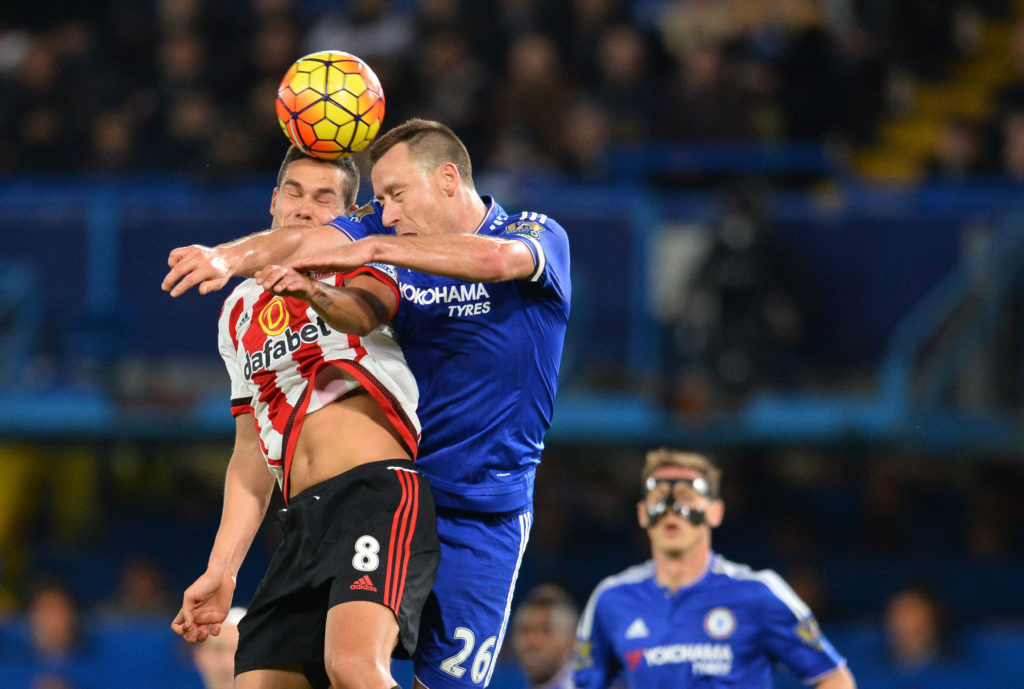
Balance is also important to investigate because balance impairments after heading might increase athletes’ vulnerability to other types of injury (e.g. lower limb) during matches. Research into balance has had mixed results. Some researchers report the presence of balance deficits following a short heading session in the lab[12][13], whereas others find no balance impairment after a heading session[14][15].
It may be the case that balance impairments are present following heading. However, the studies that show such effects used very sophisticated and sensitive measures to assess balance. Future research should seek to use more sensitive measures to further investigate whether heading affects physical functions like balance.
Is there evidence for markers of brain damage?
Analysis of blood samples taken after heading can indirectly provide information about the state of the brain. Neurofilament-light (NF-L) is a protein found in the blood that is derived originally from the brain. Presence of high levels of NF-L in the blood is thought to be indicative of micro-damage to the brain[16].
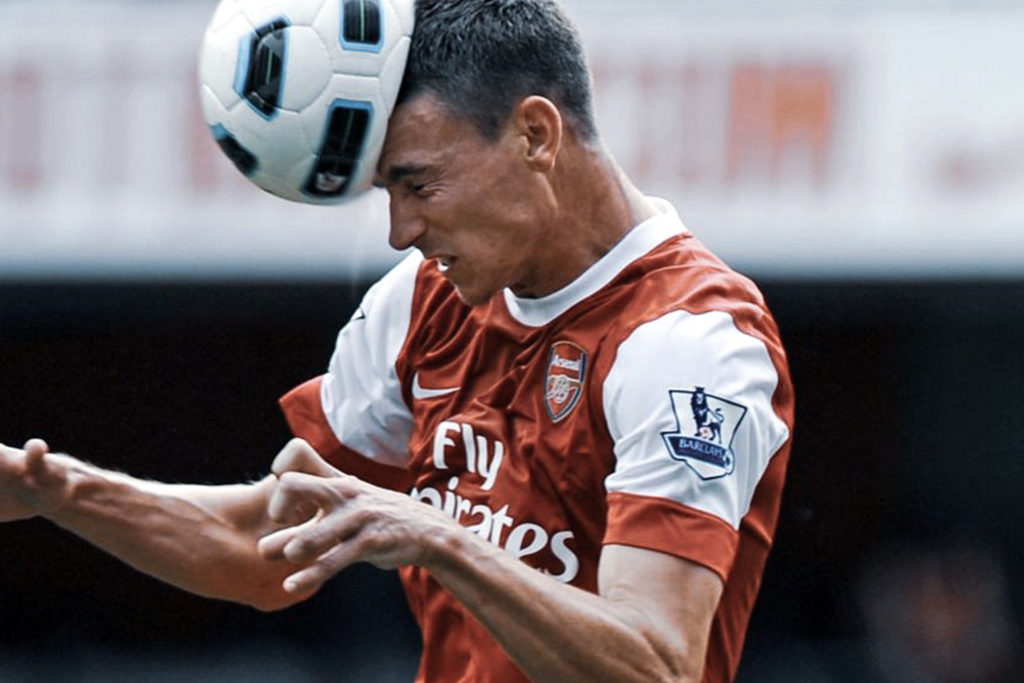
Only very recently these sensitive measures have been used to evaluate the effects of heading. These studies assessed NF-L levels in the blood before and after a heading session, finding increased levels of NF-L both 1 and 24-hours after heading[17][18].
Analysis of blood provides an efficient way of assessing damage to the brain on a short time scale, suggesting exposure to heading causes neuronal damage as quickly as 1-hour after heading.
What does this mean for heading?
There is an evidence-base emerging that suggests that heading may have adverse effects on brain health. It should be noted that there are also a number of studies suggesting there are no effects of heading on various measures of brain health. Unfortunately, many of these studies suffer from methodological issues, such as the use of insensitive research techniques.
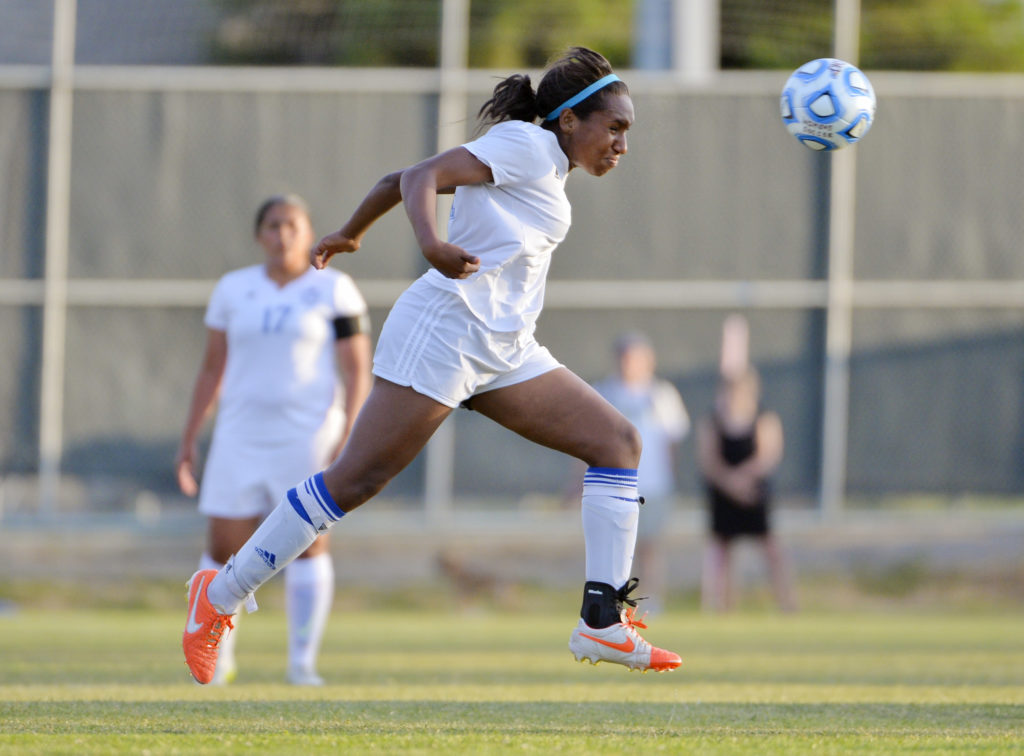
A key aim for future research is to improve the design of heading studies. This will help to provide a more accurate account of how heading truly affects brain health. However, this research is only the tip of the iceberg in terms of assessing the effects of heading. A deeper investigation of this topic will allow us to understand more about how and why heading might affect brain health.
Many of the studies in the literature take place on a long-term scale, investigating how heading soccer balls for the duration of a career impacts on brain health.
While these studies are important, we also need to achieve a greater understanding of what actually happens in the brain as a direct result of heading the ball, which is something that is currently unknown.
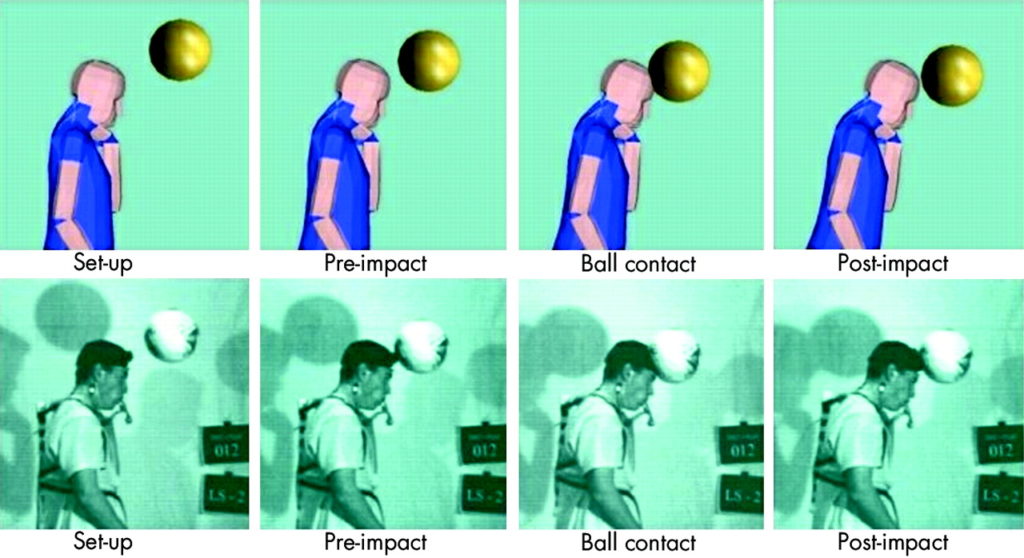
Source: https://bjsm.bmj.com/content/39/suppl_1/i26
Once we understand this we can start to work out where these long-term effects might come from. It will also allow us to understand what the immediate concerns are for players, and how we can attempt to minimise them.
Finally, we need to understand which specific characteristics of heading cause these effects.
Understanding how much exposure to heading is safe, whether different types of headers (glancing headers from corners vs powerful headers from goal kicks) cause negative effects, and how we can perhaps minimise any adverse effects of heading on brain health are all key to understanding the true risks of soccer heading.
Our Stirling Brains research group will conduct further research into the effects of soccer heading on brain health, with support from Storelli Sports.
References
[1] Lincoln, A. E., Caswell, S. V., Almquist, J. L., Dunn, R. E., Norris, J. B., & Hinton, R. Y. (2011). Trends in concussion incidence in high school sports: a prospective 11-year study. The American journal of sports medicine, 39(5), 958-963.https://www.ncbi.nlm.nih.gov/pubmed/21278427
[2] Price, J., Malliaras, P., & Hudson, Z. (2012). Current practices in determining return to play following head injury in professional football in the UK. Br J Sports Med, 46(14), 1000-1003. https://bjsm.bmj.com/content/46/14/1000.short
[3] Bailes, J. E., Petraglia, A. L., Omalu, B. I., Nauman, E., & Talavage, T. (2013). Role of subconcussion in repetitive mild traumatic brain injury: a review. Journal of Neurosurgery, 119(5), 1235-1245. https://thejns.org/view/journals/j-neurosurg/119/5/article-p1235.xml
[4] Koerte, I. K., Mayinger, M., Muehlmann, M., Kaufmann, D., Lin, A. P., Steffinger, D., … & Heinen, F. R. (2016). Cortical thinning in former professional soccer players. Brain imaging and behavior, 10(3), 792-798. https://link.springer.com/article/10.1007/s11682-015-9442-0
[5] Lipton, M. L., Kim, N., Zimmerman, M. E., Kim, M., Stewart, W. F., Branch, C. A., & Lipton, R. B. (2013). Soccer heading is associated with white matter microstructural and cognitive abnormalities. Radiology, 268(3), 850-857.https://pubs.rsna.org/doi/full/10.1148/radiol.13130545
[6] Fields, R. D. (2008). White matter in learning, cognition and psychiatric disorders. Trends in Neurosciences, 31(7), 361-370.https://www.sciencedirect.com/science/article/pii/S016622360800132X
[7] Ling, H., Morris, H. R., Neal, J. W., Lees, A. J., Hardy, J., Holton, J. L., … & Williams, D. D. (2017). Mixed pathologies including chronic traumatic encephalopathy account for dementia in retired association football (soccer) players. Acta neuropathologica, 133(3), 337-352. https://link.springer.com/article/10.1007/s00401-017-1680-3
[8] Lee, E. B., Kinch, K., Johnson, V. E., Trojanowski, J. Q., Smith, D. H., & Stewart, W. (2019). Chronic traumatic encephalopathy is a common co-morbidity, but less frequent primary dementia in former soccer and rugby players. Acta neuropathologica, 1-11. https://link.springer.com/article/10.1007/s00401-019-02030-y
[9] Di Virgilio, T. G., Hunter, A., Wilson, L., Stewart, W., Goodall, S., Howatson, G., … & Ietswaart, M. (2016). Evidence for acute electrophysiological and cognitive changes following routine soccer heading. EBioMedicine, 13, 66-71.https://www.ncbi.nlm.nih.gov/pubmed/27789273
[10] Levitch, C. F., Zimmerman, M. E., Lubin, N., Kim, N., Lipton, R. B., Stewart, W. F., … & Lipton, M. L. (2018). Recent and long-term soccer heading exposure is differentially associated with neuropsychological function in amateur players. Journal of the International Neuropsychological Society, 24(2), 147-155.https://www.cambridge.org/core/journals/journal-of-the-international-neuropsychological-society/article/recent-and-longterm-soccer-heading-exposure-is-differentially-associated-with-neuropsychological-function-in-amateur-players/709B86942F2170B85B13372BA25F172E
[11] Stewart, W. F., Kim, N., Ifrah, C., Sliwinski, M. J., Zimmerman, M., Kim, M., … & Lipton, M. L. (2018). Heading frequency is more strongly related to cognitive performance than unintentional head impacts in amateur soccer players. Frontiers in neurology, 9, 240.https://www.frontiersin.org/articles/10.3389/fneur.2018.00240/full
[12] Haran, F. J., Tierney, R., Wright, W. G., Keshner, E., & Silter, M. (2013). Acute changes in postural control after soccer heading. International journal of sports medicine, 34(04), 350-354. https://www.thieme-connect.com/products/ejournals/html/10.1055/s-0032-1304647
[13] Hwang, S., Ma, L., Kawata, K., Tierney, R., & Jeka, J. J. (2017). Vestibular dysfunction after subconcussive head impact. Journal of Neurotrauma, 34(1), 8-15.https://www.liebertpub.com/doi/abs/10.1089/neu.2015.4238
[14] Broglio, S. P., Guskiewicz, K. M., Sell, T. C., & Lephart, S. M. (2004). No acute changes in postural control after soccer heading. British journal of sports medicine, 38(5), 561-567. https://bjsm.bmj.com/content/38/5/561.short
[15] Mangus, B. C., Wallmann, H. W., & Ledford, M. (2004). Soccer: Analysis of postural stability in collegiate soccer players before and after an acute bout of heading multiple Soccer balls. Sports Biomechanics, 3(2), 209-220.https://www.tandfonline.com/doi/abs/10.1080/14763140408522841
[16] Zetterberg, H., & Blennow, K. (2016). Fluid biomarkers for mild traumatic brain injury and related conditions. Nature reviews Neurology, 12(10), 563.https://www.nature.com/articles/nrneurol.2016.127
[17] Wallace, C., Smirl, J. D., Zetterberg, H., Blennow, K., Bryk, K., Burma, J., … & van Donkelaar, P. (2018). Heading in soccer increases serum neurofilament light protein and SCAT3 symptom metrics. BMJ open sport & exercise medicine, 4(1), e000433.https://bmjopensem.bmj.com/content/4/1/e000433.abstract
[18] Wirsching, A., Chen, Z., Bevilacqua, Z. W., Huibregtse, M. E., & Kawata, K. (2019). Association of acute increase in plasma neurofilament light with repetitive subconcussive head impacts: a pilot randomized control trial. Journal of Neurotrauma, 36(4), 548-553.https://www.liebertpub.com/doi/abs/10.1089/neu.2018.5836

